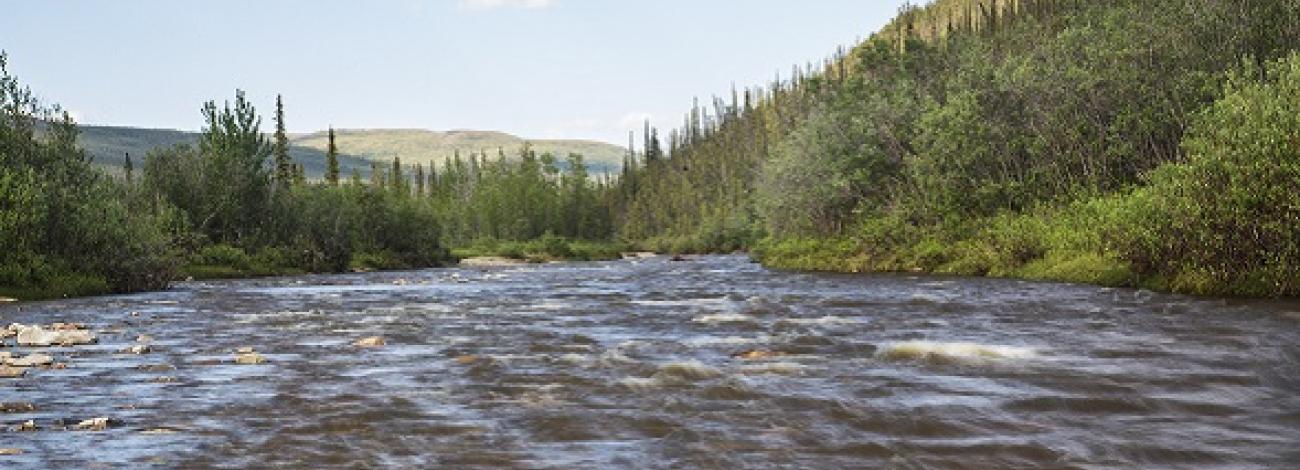
Steese National Conservation Area
A half day’s drive from Fairbanks, Alaska, the Steese National Conservation Area (NCA) offers stunning scenery, peaceful solitude, and outstanding opportunities for year-round recreation. The NCA was designated by the Alaska National Interest Lands Conservation Act in 1980 to protect the area’s special values, particularly Birch Creek Wild and Scenic River, and caribou habitat.
The NCA plays a major role in the annual life of cycle of the Fortymile and White Mountains caribou herds, offering migration corridors, summer crucial calving grounds in high alpine tundra, and winter ranges among black spruce boreal forests. A few areas provide year-round habitat for Dall sheep, an uncommon species in Interior Alaska.
Summer visitors to the NCA backpack, hike, camp, fish, pick berries, and hunt under Alaska's 'midnight sun.' Located in two units straddling the remote Steese Highway, the NCA offers primitive, remote recreation opportunities with few encounters with others. Wildlife viewing opportunities abound – raptors, upland birds, moose, fox, caribou, and bears are just a few of the mammals that may be spotted while recreating along Birch Creek Wild and Scenic River, the Pinnell Mountain National Recreation Trail, or one of the many travel routes that access the NCA.
- WILDLIFE AND FISH
-
The Steese NCA provides habitat for caribou, moose, Dall sheep, grizzly and black bear, furbearers, small game, raptors, waterfowl, and numerous species of small mammals and birds. One endangered species, the peregrine falcon, as well as bald eagles are known to nest in the area.
Portions of the Steese NCA are used by the White Mountains and the Fortymile caribou herds. Caribou are migratory animals, and the exact location of areas they use may change from year to year as herd size fluctuates and/or migration routes change.
Streams and rivers within the Steese NCA are home to a number of fish species, including Arctic grayling, round whitefish, burbot, northern pike, slimy sculpin, and longnose sucker. Small numbers of King and chum salmon are found in some of the larger streams and rivers.
- VEGETATION
-
Alpine tundra, tussocks and boreal forest are among the many different types of plant communities in the Steese NCA.
Alpine tundra, found on ridges and mountain tops above the timberline, is characterized by dwarf shrubs, forbs, grasses, sedges and lichens. Near the timberline, there may be significant quantities of dwarfed white spruce.
Tussock areas are flat to moderately sloping with poorly drained soils that support a cover of tussocks (clumps of sedges and grasses growing from small mounds), as well as scattered or stunted spruce.
Lower elevations are vegetated with species typical of the boreal forest. Black spruce, sphagnum mosses, and scattered shrubs and willows are found in poorly drained areas where permanently frozen soil (permafrost) is near the surface. Better-drained hillsides and valley floors are home to white spruce, birch, willow and aspen. Blueberry and cranberry bushes provide vivid fall colors as well as tasty berries enjoyed by wildlife and people alike.
- HISTORY
-
The Athabascan Indians were probably the first settlers in this area. They occupied sections of Birch Creek to hunt for moose and waterfowl and to fish.
Miners moved into the area in 1893. Two Russian Koyukon men, Pitka Pavaloff and Sergai Cherosky, panned for gold at what is now known as Pitka’s Bar on Birch Creek. When they returned the following year, they were followed by more than 100 other miners who began prospecting on adjoining tributaries and eventually seized Pavaloff and Cherosky's claims.
Other entrepreneurs populated the area by blazing trails, freighting goods and establishing roadhouses. Old miner and trapper cabins still remain standing along the river. These structures and the items found with them are important pieces of our history that belong to everyone. It is important not to disturb them.
The Steese Highway, completed in 1927, and the Steese NCA were named after James G. Steese, a former president of the Alaska Road Commission.
Plan Your Visit
- Recreation Opportunities
- Know Before you Go
- Steese/Elliott Highway Brochure
- Map
- Interactive Map
- Summer Recreation GeoPDF Map
- Winter Recreation GeoPDF Map
- Birch Creek Wild and Scenic River GeoPDF Map
- Pinnell Mountain National Recreation Trail GeoPDF Map
